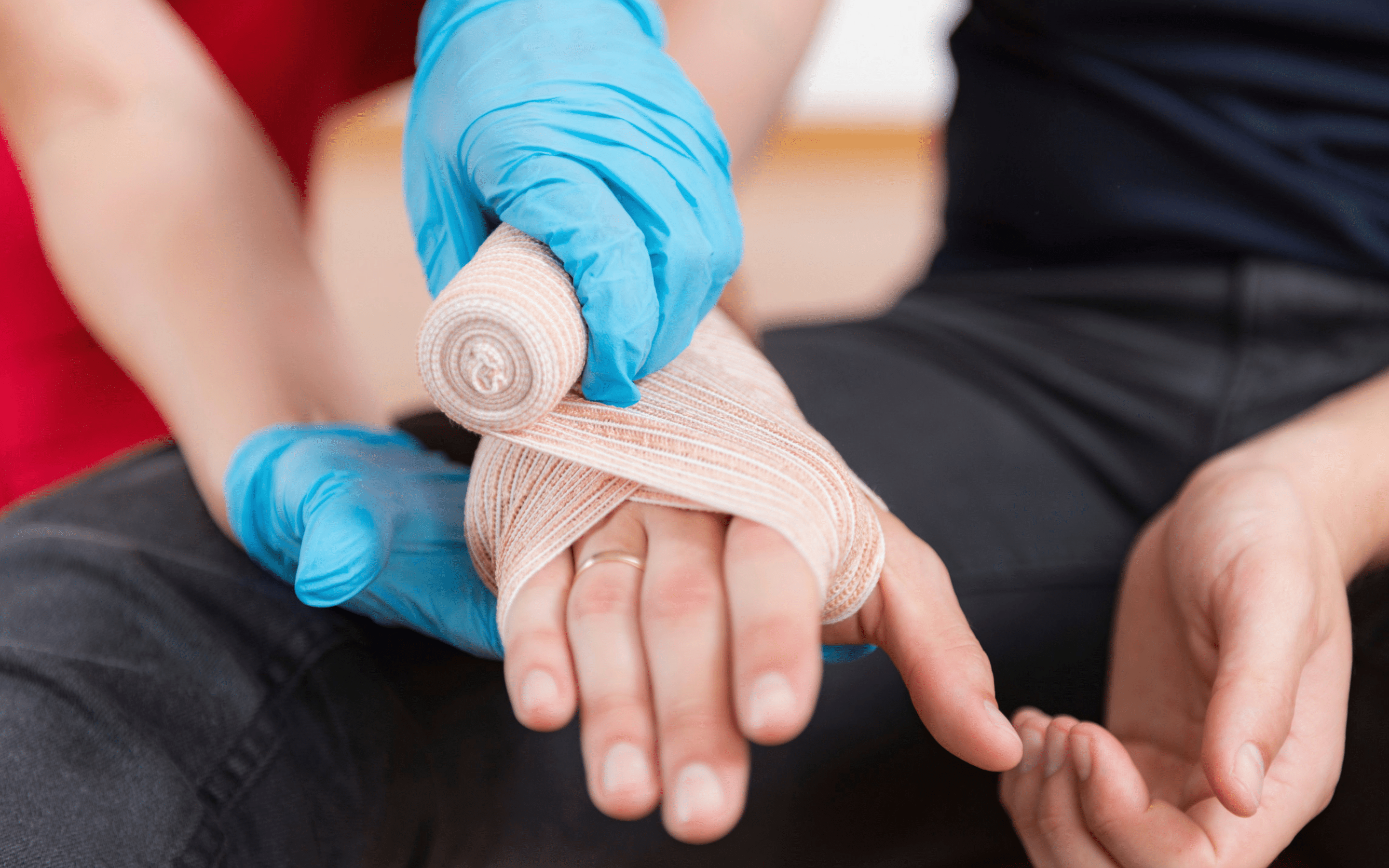Burns are a common workplace injury that can result from exposure to heat, chemicals, electricity, radiation, and other hazards. Depending on their severity, burns can cause pain, swelling, blistering, tissue damage, and even death.
In this article, we will discuss the different degrees of burns and their common causes in the workplace, as well as effective treatment options and strategies for prevention.
What are the degrees of burns?
Burns are classified into three degrees based on their severity. First-degree burns are the mildest and only affect the top layer of skin. They typically result in redness, pain, and minor swelling and usually heal within a few days.
Second-degree burns affect the top layer and the layer underneath the skin, causing blistering, severe pain, and swelling. These burns can take weeks to heal and may require medical attention.
Third-degree burns are the most severe and affect all layers of the skin, causing a deep, charred appearance, and may also damage underlying tissues, bones, and organs.
What are the common causes of burns in the workplace?
Burns can result in serious and potentially life-threatening workplace injuries that can result from a variety of causes. The risk of burns is higher in certain industries, such as construction, manufacturing, and hospitality, where hot equipment, machinery, and substances are frequently used.
Some of the most common causes of burns in the workplace include:
- Heat sources: Exposure to heat sources, such as open flames, hot surfaces, steam, or boiling liquids.
- Electrical Burns: These burns can occur when workers come into contact with live wires, faulty equipment, or when electrical systems are not properly grounded.
- Chemicals: Burns can also be caused by exposure to corrosive chemicals, such as acids or alkalis, which can cause severe burns and tissue damage.
- Radiation: Workers who are exposed to sources of radiation, such as X-rays, UV rays, or nuclear materials, can suffer burns and other tissue damage.
- Friction or contact burns: Friction burns can occur when skin rubs against rough surfaces, such as pavement or carpet. Contact burns can occur when the skin comes into contact with hot surfaces, such as machinery or vehicle parts.
Treating burns in the workplace
Effective treatment options for burns depend on the degree of the burn, its severity, and the source of the burn. Having a burns kit on site can assist you in treating burns in the workplace, should they occur.
How to treat fire burns and wounds
Fire burns and wounds can be serious injuries that require prompt and appropriate treatment. To treat a fire burn, it’s important to remove the source of heat, cool the affected area with cool water, remove any clothing or jewellery near the burn, and cover the burn with a clean, non-fluffy dressing or cloth.
If the burn is larger than a 50p coin, or the skin is broken, or the burn is on the face, hands, feet or genitals, or if the burn is causing severe pain, swelling or blistering, it will require medical attention. With appropriate treatment, most burns and wounds will heal within a few days to a few weeks.
How to treat burns from electrical contact
If someone has been burned due to electrical contact, turn off the electrical source and call for emergency medical assistance, even if the burn appears minor. Do not touch the burn or attempt to remove any clothing stuck to it. Check the victim’s airway and breathing, and perform CPR if necessary.
Cover the burn with a clean, dry, non-fluffy dressing and keep the victim warm to prevent hypothermia. Monitor their vital signs until medical help arrives. Remember that electrical burns can be more severe than they appear, so seeking prompt medical attention is crucial for preventing further injury and promoting proper healing.
How to treat chemical burns
To treat chemical burns, remove the chemical source and flush the affected area with cool water for at least 20 minutes. Remove contaminated clothing carefully and cover the burn with a sterile, non-fluffy dressing, and provide first aid for shock if necessary.
It’s important to identify the type of chemical involved and seek medical advice on the appropriate course of action, as the treatment varies depending on the chemical involved. You can also provide your employees with COSHH training so that they can learn how best to handle hazardous substances and chemicals.
How to prevent burns in the workplace
Preventing workplace burns requires a combination of training, hazard assessments, and appropriate personal protective equipment (PPE). Employers should conduct regular risk assessments to identify potential hazards and implement appropriate safety measures to prevent burns.
This may include the use of PPE, such as gloves, protective clothing, and face shields, as well as providing appropriate training and supervision to workers. By taking proactive steps to prevent burns, employers can create a safe and healthy workplace for their employees.
Do you understand burns in the workplace?
Burns in the workplace can have serious consequences for workers, their families, and employers. By understanding the common causes of burns, identifying potential hazards, providing appropriate PPE, and implementing safety measures and training, employers can prevent burns and promote a safe and healthy workplace.
In the event of a burn injury, it’s important to seek prompt medical attention and provide appropriate first aid to minimise pain, prevent infection, and promote healing. By taking a proactive approach to burn prevention and treatment, you can reduce the risk of workplace burn injuries and promote the well-being of all your workers.









